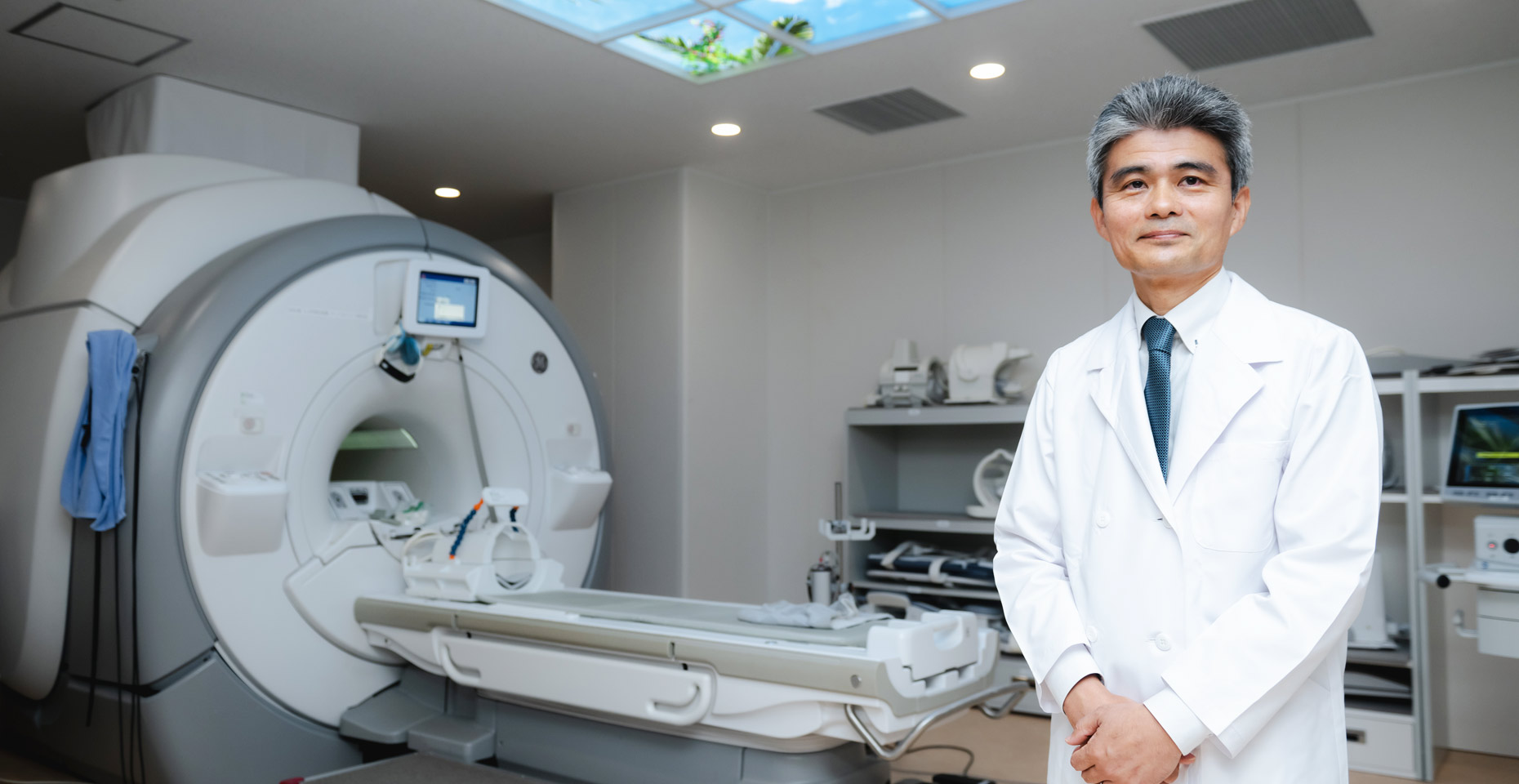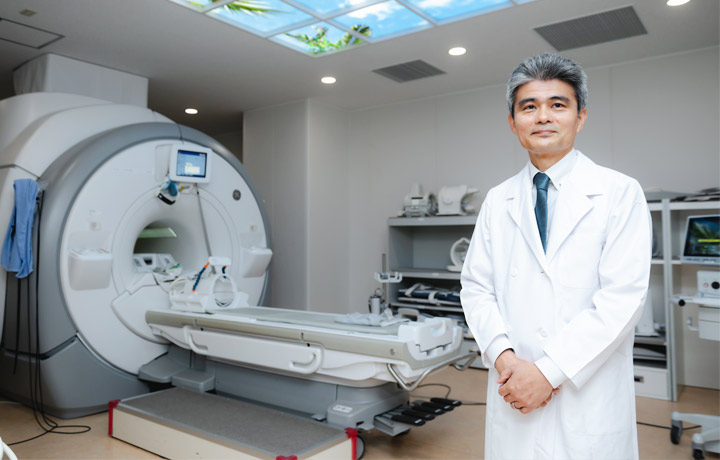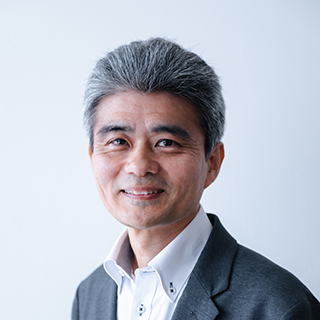Chiba University’s Research Center for Child Mental Development provides cognitive behavioral therapy (CBT) to help treat mental illness. But how exactly does CBT affect the brain, and in which area? Professor Yoshiyuki Hirano, the center’s deputy director, is using functional Magnetic Resonance Imaging (fMRI) to study how the brain functions. His goal is to clarify what happens in the brains of patients with anxiety and obsessive-compulsive disorders and to understand the differences between those who respond well to treatment and those who do not.
Understanding mental disorders objectively through brain activity
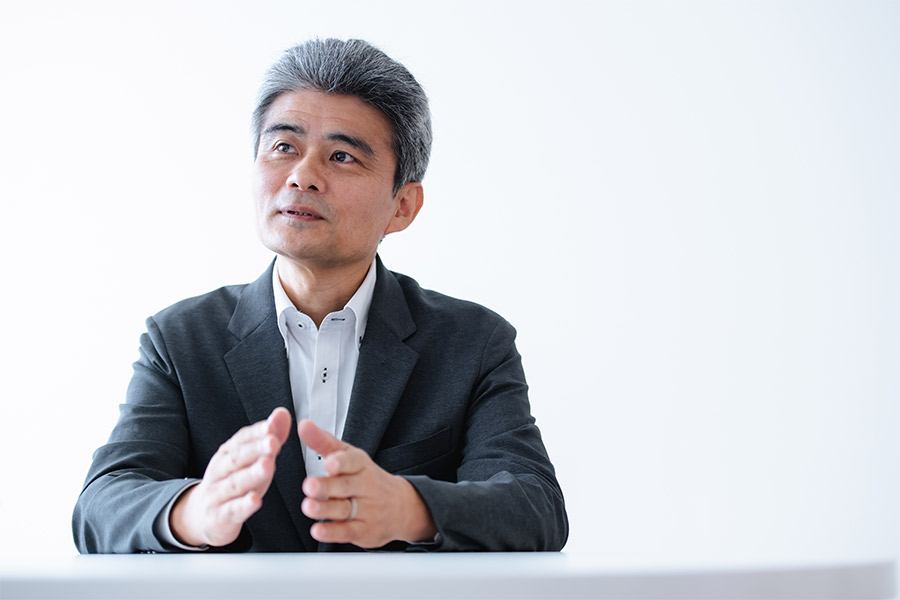
First, please tell us what cognitive behavioral therapy is.
Cognitive behavioral therapy (CBT) is a type of psychotherapy that targets mental illnesses such as depression. Under a doctor’s guidance, patients can alleviate their symptoms by reviewing and changing their patterns of thinking and behavior. Research has shown that CBT can be as effective as, or even more effective than, medication-based treatments.
But what exactly makes it effective? I am exploring this question from a neuroscience perspective, focusing on how CBT changes brain function and promotes recovery.
To do this, we first need to understand how the brains of patients differ from those of non-patients. Currently, we can only assess the severity of a patient’s condition and the extent to which their symptoms have improved through CBT based on their own reports—that is, using subjective information. However, if we could observe these changes directly in the brain, we could use them as objective indicators to better understand the symptoms.
Just as blood pressure is used to determine whether someone has hypertension, you are working to develop an “externally measurable indicator” for mental illness. The question is whether we can distinguish patients from non-patients—track changes in symptoms—by examining how the brain appears?
Studies have shown that people with obsessive-compulsive disorder (OCD)—a condition in which they cannot stop behaviors such as frequent handwashing or repeated lock confirmation—tend to have a larger globus pallidus*1 and a smaller hippocampus*2 compared to those without the disorder.
My own research, however, focuses on how the brain functions—for example, which areas are active and how different regions are connected to one another. Using functional magnetic resonance imaging (fMRI), which tracks changes in blood flow across the brain, I study the networks of brain activity involved in these processes.
*1 Globus pallidus: A part of the basal ganglia, located in each hemisphere of the forebrain. Together with the putamen, it forms the lentiform nucleus.
*2 Hippocampus: A part of the limbic system, often described as the brain’s memory control center.

Identifying hard-to-diagnose diseases through the brain
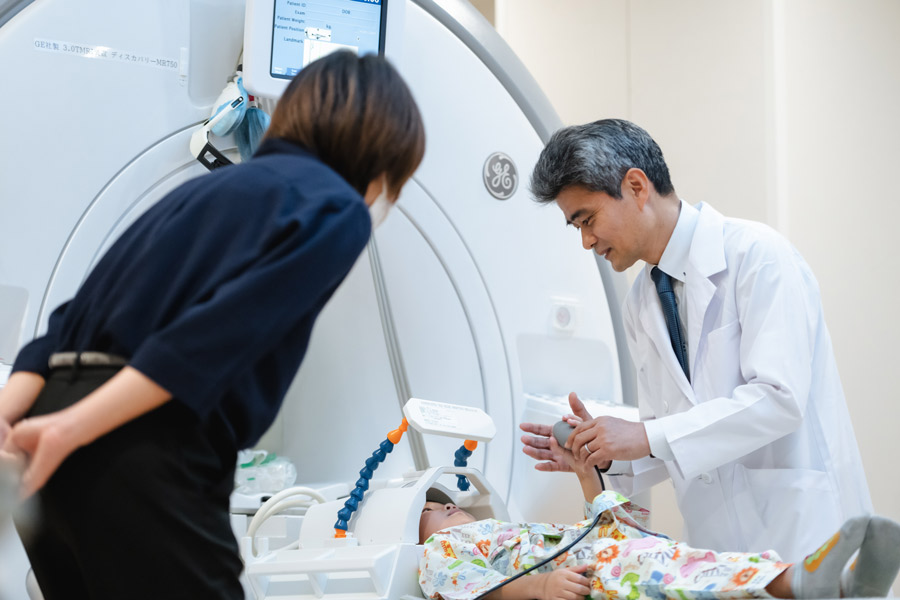
What have you learned from your research so far?
For example, some people have generalized anxiety disorder, which involves excessive worry in everyday life, while others have social anxiety disorder, characterized by intense anxiety in social situations. Some individuals have both disorders, whereas others experience only one. Because treatment approaches differ between the two, an accurate diagnosis is essential for providing appropriate treatment care. Our research suggests that it may be possible to distinguish between these disorders based on differences in brain networks.
At the same time, we are also investigating how brain function differs between patients and non-patients. We hope that these findings will help identify target areas for treatment. One potential application could be to the development of drugs that act on specific brain regions associated with psychiatric disorders for which no effective medications currently exist.
Can we also see how existing drugs affect the brain?
No, the center I work at provides CBT, so our research focuses on its therapeutic effects. We can not only observe changes in the brain before and after CBT, but also distinguish between those who respond well and those who do not.
How can you tell the difference?
CBT involves a process called “cognitive restructuring,” which changes the way people perceive things. For example, for individuals with OCD who feel compelled to wash their hands for hours, CBT can help them change their perception so that they believe they can manage without washing as frequently.
Research using fMRI has identified the brain areas that are active during this cognitive restructuring. Other studies have found that certain regions tend to be less active in people with autism spectrum disorder—for example, a smaller occipital cortex is thought to indicate lower activity.
This suggests that CBT may be less effective for treating OCD in individuals who also have autism spectrum disorder. In this way, differences in the effectiveness of CBT may be influenced by the specific characteristics of each disorder.
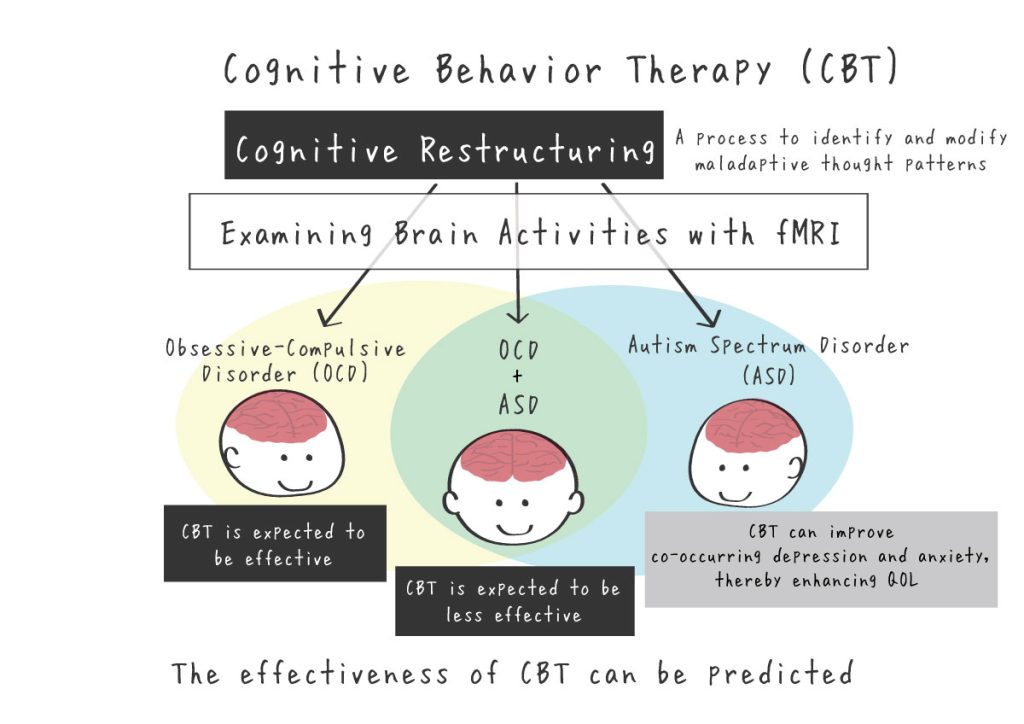
Unlike X-rays or blood tests, it must be very challenging to perform fMRI scans on many patients, especially before and after treatment, and then compare the results.
Admittedly, research of this kind has a limitation: a single facility can only study a limited number of cases, and small sample sizes may lead to inconsistent results. To overcome this, I conducted a joint study with five facilities across the country, analyzing both structural*1 and functional*2 brain images of women with anorexia. We collected over 100 images each from women with and without anorexia, making this the largest such analysis in the world.
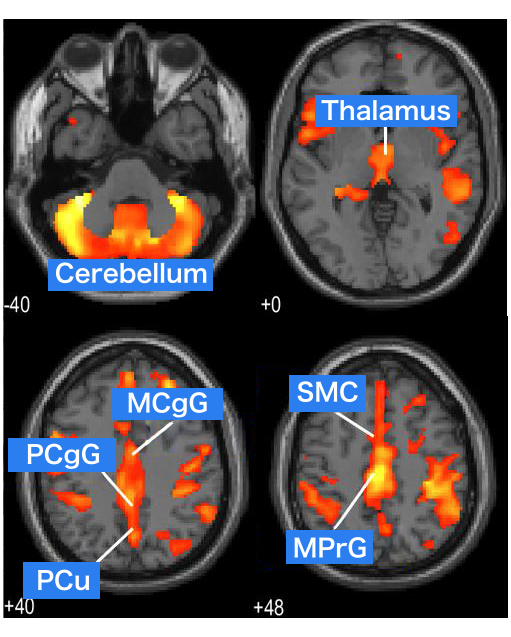
SMC: supplementary motor cortex, MPrG: precentral gyrus medial segment, MCgG: middle cingulate gyrus, PCgG: posterior cingulate gyrus, PCu: precuneus
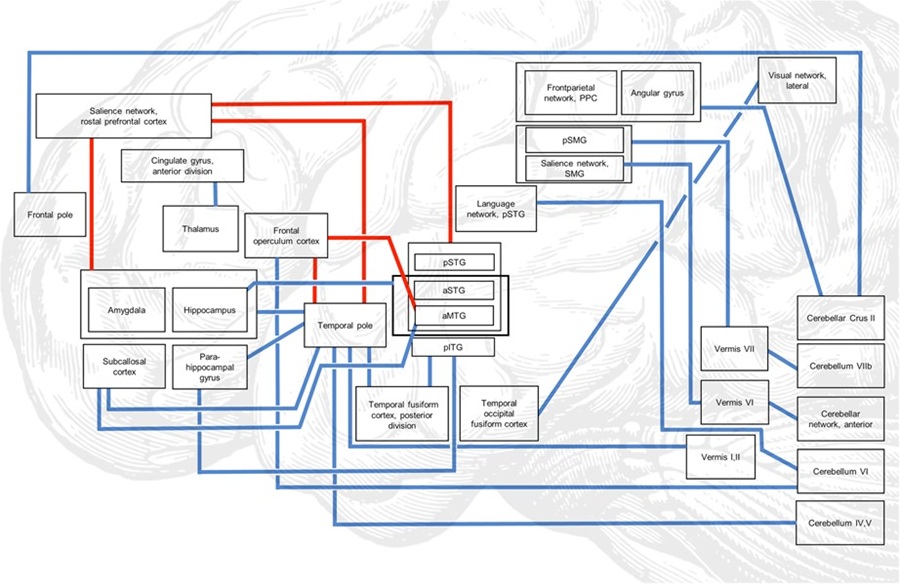
Compared to individuals without anorexia, those with the disorder showed a more active ‘red-line network’ and a less active ‘blue-line network’ in the brain.
These studies also found that women with anorexia had reduced gray matter* volume in various brain regions compared to women without anorexia, and that the degree of reduction was proportional to the severity of the condition. We identified 45 brain regions that exhibited different functional patterns between women with and without anorexia.
*Gray matter: The area in the central nervous system where neuron cell bodies are concentrated.
My main research interests are anorexia nervosa and social anxiety disorder. By investigating the brain characteristics of individuals with these conditions, I hope to contribute to the development and improvement of treatment.
Using What We Learn for Treatment—and Prevention
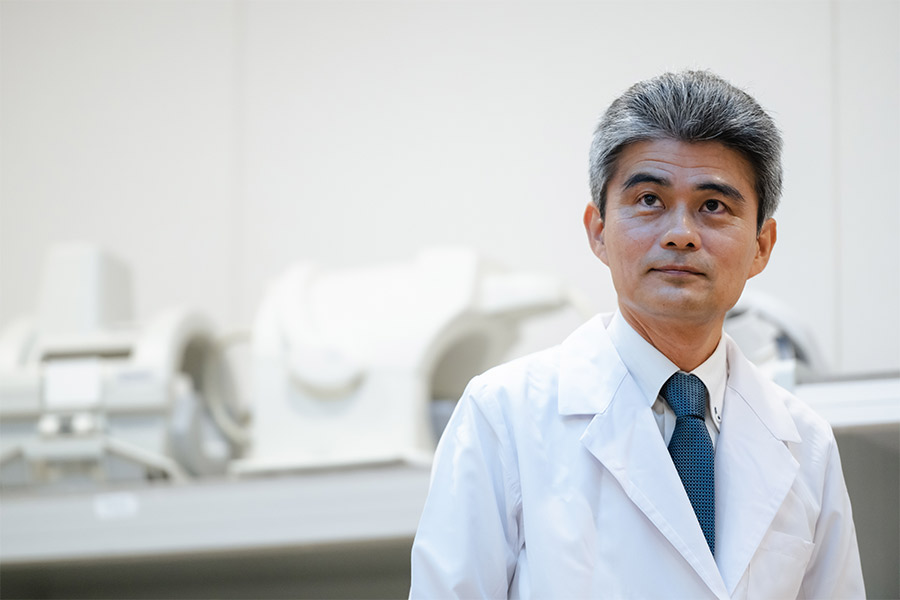
How do you hope this research will be applied in the future?
I hope that this technology will be applied not only to research into treatments, but also to prevention and early detection. For example, if someone feels their mental health is declining, and an imaging diagnosis shows that their brain patterns resemble those of a person with depression, they could take early action—such as visiting a hospital or taking time off work.
Japan has a relatively high number of MRI machines per capita, so I think it could be feasible to use them as part of something like an annual health checkup.
I understand that a CBT program for children has been developed. Could you tell me more about that?
We have created a teaching material called ‘Resilience World Adventure’ for fifth- and sixth-grade students, which we envision being used throughout the school year. This material was developed as part of an international collaborative research project with Brazil, and we also plan to introduce it in Brazilian elementary schools.

It’s difficult for anyone to have a heart that never wavers in the face of challenge, but it’s still possible to live a happy life. What makes that possible is ‘resilience.’ Like a tree that bends but springs back even after strong winds, resilience allows us to recover and grow. To foster this capacity in children, we developed ‘Resilience World Adventure.’
I believe that nurturing resilience from an early age will help protect mental health throughout life and may even play a role in preventing mental illness. This is just my personal view, but I think people who avoid mental illness are, in a sense, practicing
CBT on themselves—often without even realizing it.
So, your focus extends not just to the medical field but also to education
In a broad sense, education is closely linked to preventive medicine. This material was developed through close collaboration with a lab member who is also a licensed nurse and researcher.

So, collaboration with other fields is moving forward?
That’s right. My own background is in veterinary medicine, but our lab is truly diverse, including medical professionals like doctors, nurses, and physical therapists, as well as members with expertise in engineering and education. It’s also very international—of our 17 students, seven are from either China, Turkey, or Indonesia.
I always encourage my students to discuss their research with a variety of people. When it comes to choosing research topics, I try to draw on ideas from both colleagues and students. I look for topics that are not only highly significant, contributing to medical advancements, but also genuinely interesting, so students are motivated to pursue them thoroughly.
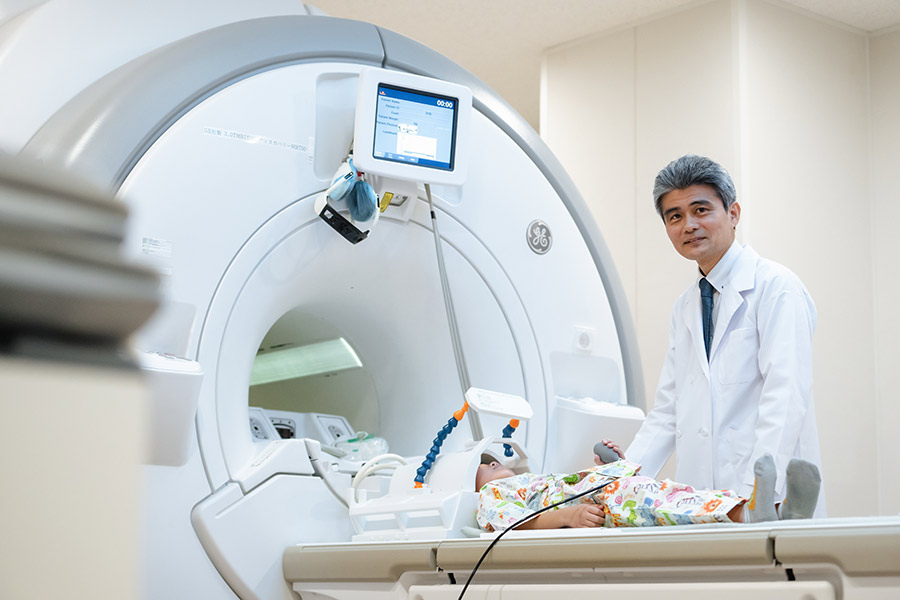
● ● Off Topic ● ●
Writer Eguchi: I heard you like to cook foreign cuisine. What kinds of dishes do you usually make?
The other day, I made Youpo Noodles (Shaanxi style). My family loves spicy food, so I enjoy experimenting with different types of chili peppers and Sichuan peppercorns.
Cycling is another hobby of yours, isn’t it? Where do you usually go?
I like exploring Satoyama* routes on my cross bike. Chiba City and its surrounding areas are full of beautiful, refreshing scenery. Recently, I enjoyed biking in Sakura.
*Satoyama: Forests and surrounding natural environments close to where people live, shaped and maintained over generations as part of everyday life.
Recommend
-
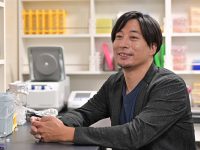
Taking up Immunological Research against Incurable Diseases−The Significance of “1” Life
2023.01.12
-

Creating Cities of Coexistence: Transitional Landscapes with the Tapestry of Diverse Lives
2024.02.09
-

Listening to the Voices of the Universe: Multi-Messenger Astrophysics with Gravitational and Electromagnetic Waves
2025.05.16


